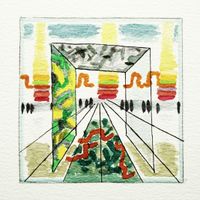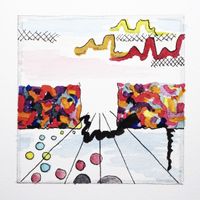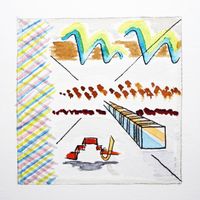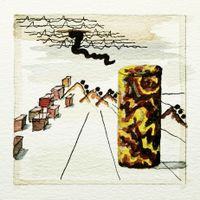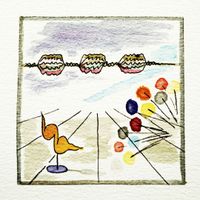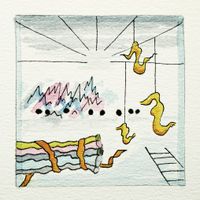Six Little Symphonies by Darius Milhaud
This project includes paintings which use synesthetic imaginations as basic elements of artistic configuration. It is based on subjective experience evoked by listening to the chamber symphonies by Darius Milhaud (1892-1974).
Darius Milhaud composed the little Symphonies de Chambre between 1917 and 1923. Each symphony consists of three movements. The instrumentation varies between mixed chamber orchestra (1-3), tentet of strings (4), tentet of wind instruments (5), and vocal quartet in combination with oboe and cello (6).
With total durations of four to eight minutes, Milhaud’s chamber symphonies are extremely short. All pieces are performed on a small number of instruments. Only no. 6 includes voices. Main motifs sound folklike with frequent use of folk-dance rhythms. Musical patterns, however, exceed traditional tonality to form bi- and polytonal structures as well as modal soundscapes. The first auditory impression, however, is misleading: the little symphonies appear to be highly complex, with surprising changes of timbre and contrapuntal details.
The depictions are based on fragments of my synesthetic imagination. They occur during listening to the recording of soloists and chorus of the Capella Cracoviensis, conducted by Karl Anton Rickenbacher in 1991. The use of different instruments provides a rich variation of timbres. In my impression, this causes a variety of colors, forms and spatial configurations. Due to the complexity of the music, it would be impossible to precisely transfer the music into the image note by note. Furthermore, this proceeding would not fulfill artistic demands on creative treatment of daily life experience. Therefore, the pictures use just fragments of my impression as base elements. These forms are freely arranged in a new environment, thus interacting within an artificial spatial configuration. Everything is subject to simplification and compression. Minimalism of the images thus corresponds to the supposed simplicity of the symphonies.
No. 1 - op.43
No. 2 - op.49
No. 3 - op.71
No. 4 - op.74
No. 5 - op.75
No. 6 - op.79
8x8cm, watercolor, pencil, ink
Michael Haverkamp, 2019
